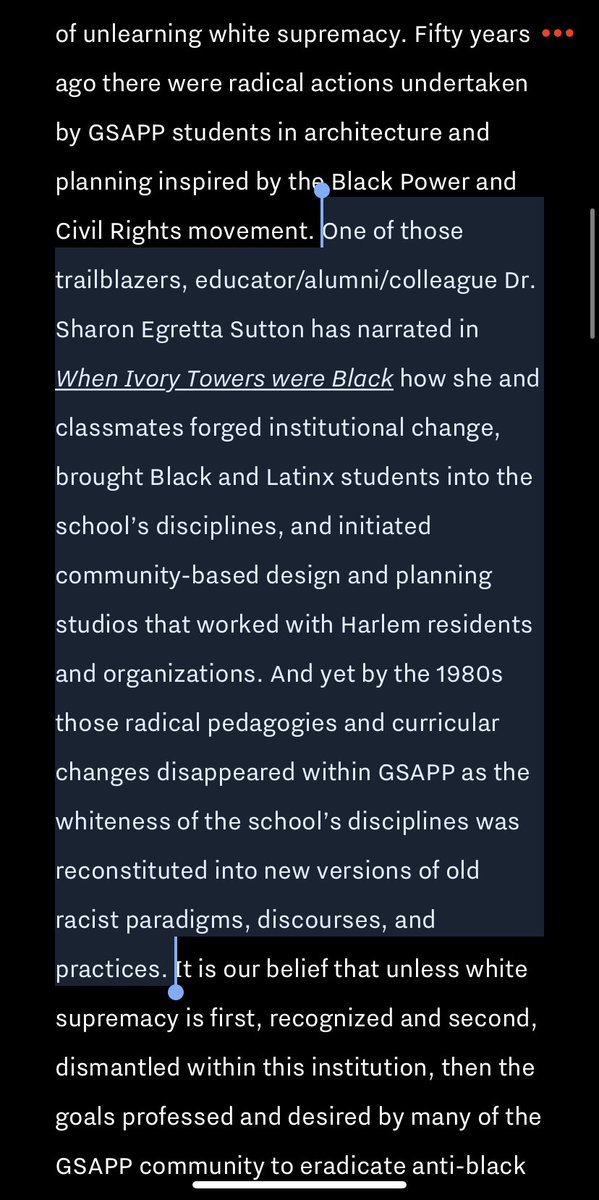The focus on newness is a fundamentally market driven understanding of architecture, where value is achieved through distinction from other spaces. Spaces $ because they’re not like others
we are conditioned to care about space based on how much a profit oriented market pays for it
tldr: arch pedagogy logic is real estate logic
(caveat: I am still learning and I imagine that many people are probably doing this Work already. I can see how much more I can learn and am excited for it)
facilitator-trainers (collaboration),
engineers (building &planning),
movement organizers (supporting & maintaining),
‘play’ers (joy, pleasure, connection)
The pedagogy curriculum is grounded in reading anti-racist, decolonialist, abolitionist thought, especially by Black feminist writers, being able to deeply SEE spaces of a deeply problematic history and a yearned-for future
@stewartbrand: “A building is not something you finish. A building is something you start”
architectural pedagogy would be explicitly grounded in studies and histories of spatial inequality, redlining, displacement, and systematic racism. (Not once in my time in M. Arch school did I learn about Seneca Village!)
An abolitionist society doesn’t need cops for us to be safe OR schools for us to learn. As bell hooks & Ivan Illich & Paulo Freire write: we can have deschooled society and liberatory & transgressive learning.
we keep us safe / we teach each other
Imagine this:
The learning collective is also a community center. We collectively run programs and maintain/change the building.
architecture culture and pedagogy can be real estate market culture
OR
spatial culture can be communal culture, play culture, abolition culture, transformative culture.
Which one do we want for our communities? In our neighborhoods? In our imaginations?
In terms of starting tomorrow, the statement that @bsa_gsapp has written to GSAPP is crucial.
I’m vowing to find ways that I can support these in my role as (adjunct) faculty, integrating these thoughts deeply into my teaching.



